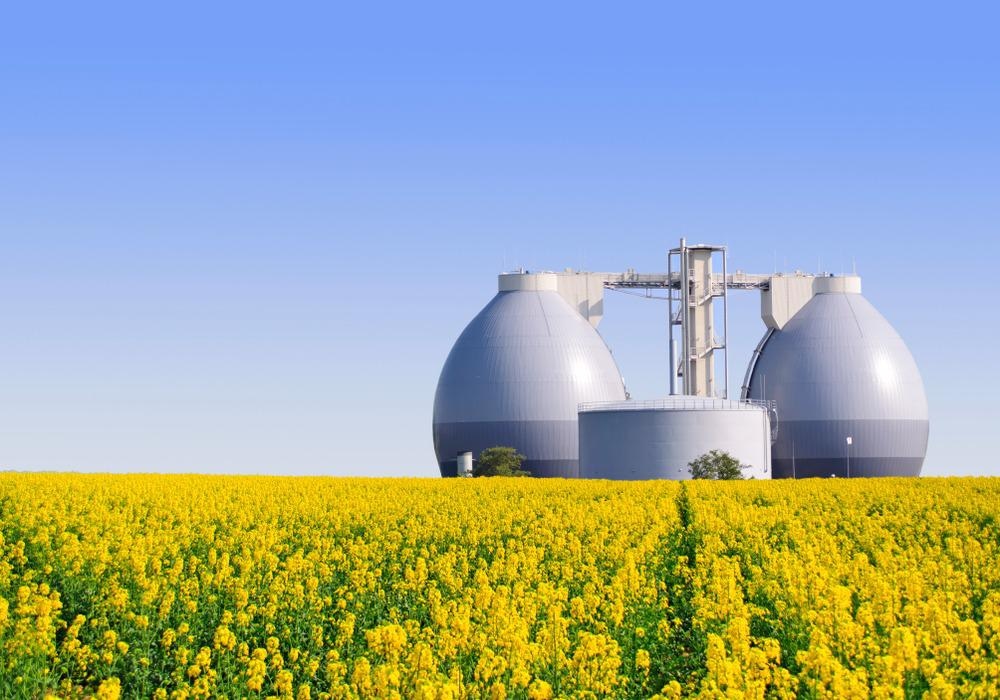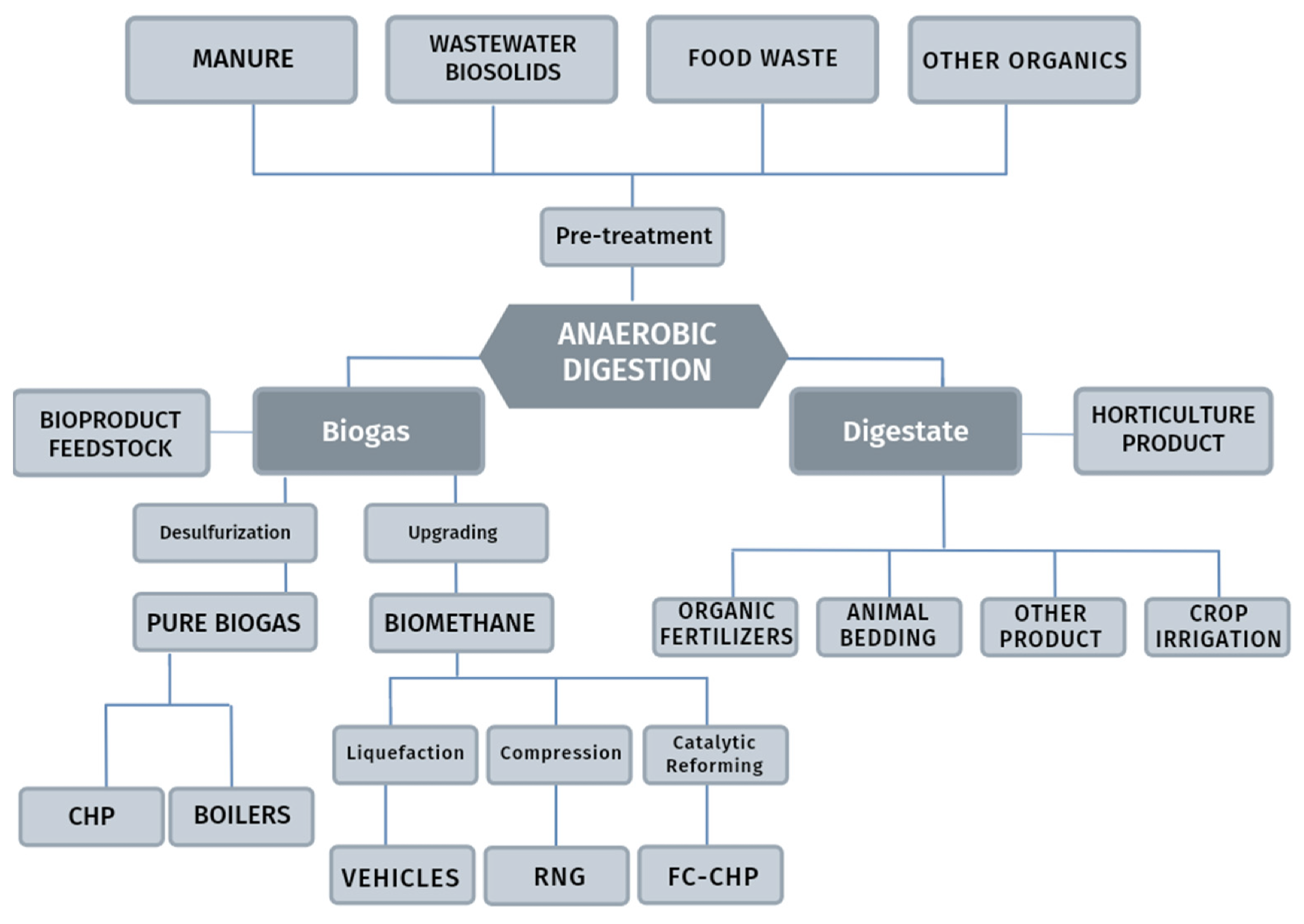 By Surbhi JainReviewed by Susha Cheriyedath, M.Sc.Apr 21 2022
By Surbhi JainReviewed by Susha Cheriyedath, M.Sc.Apr 21 2022In a review recently published in the open-access journal Energies, researchers discussed the production and use of biogas and biomethane in Europe along with the corresponding benefits, technological advances, and challenges.

Study: Biogas and Biomethane Production and Usage: Technology Development, Advantages and Challenges in Europe. Image Credit: Visions-AD/Shutterstock.com
Background
The European Union's goal of achieving a sustainable and competitive circular economy by 2050 necessitates energy system fundamental adjustments. The transportation industry, which is characterized by large emissions, is projected to experience substantial changes. Most EU member states have opted to implement a double counting method in the production of biofuels from leftover cooking oil or animal fat in order to stimulate waste-based biofuels production.
In view of low-carbon plans, gas market retention necessitates zero-carbon gases and natural gas (methane) decarbonization. Biomass-based bioenergy has received considerable attention in these times of energy scarcity. In industrialized countries, particularly in North America and Europe, switching to biomethane or renewable natural gas (RNG) is becoming more common.

Possibilities of using biogas. Image Credit: Wang, J et al., Energies
About the Study
In this study, the authors examined the present condition of biogas and biomethane production in Europe, as well as the technologies used to produce them. The biogas cleaning, generation, and upgrading processes, as well as their uses, were determined. A comprehensive review of the complete process of biomethane and biogas production, from feedstock to final product, was provided. The biogas composition and substrate possibilities were discussed.
The team focused on the most commonly used anaerobic digestion process and pre-treatment methods. Traditional upgrade procedures were discussed, as well as some more cost-effective, modern, and ecologically friendly alternatives. A literature evaluation of studies published in the last five years was done to provide information on biogas and biomethane temporary consumption, as well as other streams.
The researchers investigated the role of biogas in reaching a climate-neutral Europe, which would determine biogas' existing place in the energy mix and outline its future prospects in light of geopolitical changes and new strategies. The EU legal requirements for biogas use and emission reduction were also examined for this purpose. Moreover, analyses of biogas presence in Europe, as well as leading producing countries and distribution of installed biomethane plants per both feedstock and upgrading processes, were developed based on data published by various organizations.
The authors conducted a thorough examination of the technology used in biogas generation and use and determined biogas' existing energetic position and future potential in the EU. Academic literature included books, theses, peer-reviewed papers, abstracts, and technical reports, and the data on the state of biomethane facilities was largely taken from papers released by various professional associations and agencies. In order to analyze current developments, the figures were also sorted, analyzed, and collated.
![Biogas yield from different substrates with biomethane yield above 200 mL/g VS (according to [30]).](https://www.azom.com/images/news/ImageForNews_58872_16505335427475972.png)
Biogas yield from different substrates with biomethane yield above 200 mL/g VS. Image Credit: Wang, J et al., Energies
Observations
In 2009, Croatia's first biogas plant, with 1 MW installed power, started operations. Croatia had 41 biogas power plants with a total installed power capacity of 45.9 MW. The majority of power stations had a 1 MW installed capacity. Manure with 5–60% and corn or grass silage with 25–35% were reported to be the most common feedstocks. Food manufacturing waste, livestock manure, and sewage sludge were found to be common feedstocks. Biogas production substrates varied substantially by geography and were frequently dependent on the availability of specific raw materials in a given area.
Biogas produced by anaerobic digestion (AD) techniques accounted for 84% of total biogas production. Over 50% of AD biogas in the EU was produced in Germany, whereas 43% of landfill gas production was strongly represented in the United Kingdom. Biogas produced from sewage sludge accounted for less than 5% of all biogas produced in the EU.
In Europe, biomethane facilities were expected to produce 32 TWh by 2020. About 28% of the European plants employed agricultural substrate, while the second-place referred to 25% of energy crop feedstock. Sewage sludge facilities accounted for 14% of all sewage sludge facilities in the EU. Membrane separation was found to be the most widely utilized upgrading technology. Almost 80% of the biomethane production in Germany was heavily reliant on energy crops, and 71% of the biomethane production in France was heavily reliant on substrates such as straw, manure, cover/catch crops, and crop residues.
In Europe, combined biogas and biomethane output exceeded 191 TWh in 2020. Biomethane potential in Europe was estimated to be 1350 TWh due to the abundance of biodegradable substrates. Over the last decade, the biogas industry has grown by 90%, with Europe accounting for more than 70% of global biogas production.
Around two-thirds of biogas produced globally was used for electricity and heat, while about a third was used by the residential sector. A small percentage of biogas was converted to biomethane, pumped into the gas grid, or used as fuel.
![Related shares in biogas production (according to [135]).](https://www.azom.com/images/news/ImageForNews_58872_16505335563875613.png)
Related shares in biogas production. Image Credit: Wang, J et al., Energies
Conclusions
In conclusion, this study elucidated that biogas and biomethane have numerous advantages, including lowering energy dependence and contributing to baseload power generation. Biogas could be used to replace fossil fuels in the power generation, transportation, and residential sectors.
The authors mentioned that the various benefits of biogas are rarely recognized as a value, resulting in a final product that is far more expensive than fossil natural gas. They emphasized that for this to change, biogas-to-biomethane conversion technology must be continually improved. They also suggested strong governmental and regulatory support for biomethane production, as well as clarification of market rules.
Disclaimer: The views expressed here are those of the author expressed in their private capacity and do not necessarily represent the views of AZoM.com Limited T/A AZoNetwork the owner and operator of this website. This disclaimer forms part of the Terms and conditions of use of this website.
Source:
Wang, J., Li, D., Lv, X., et al. Biogas and Biomethane Production and Usage: Technology Development, Advantages and Challenges in Europe. Energies 15(8) 2940 (2022). https://www.mdpi.com/1996-1073/15/8/2940